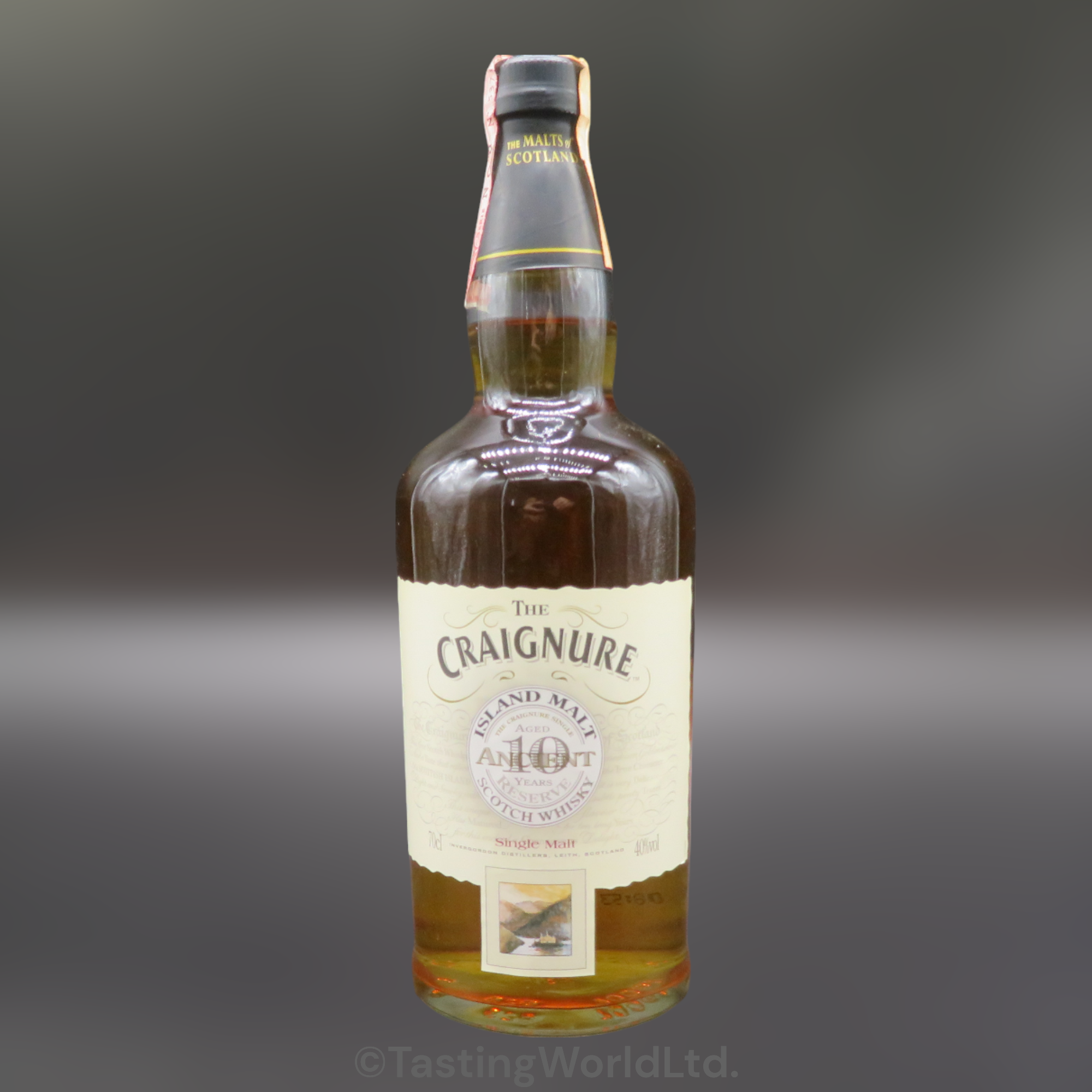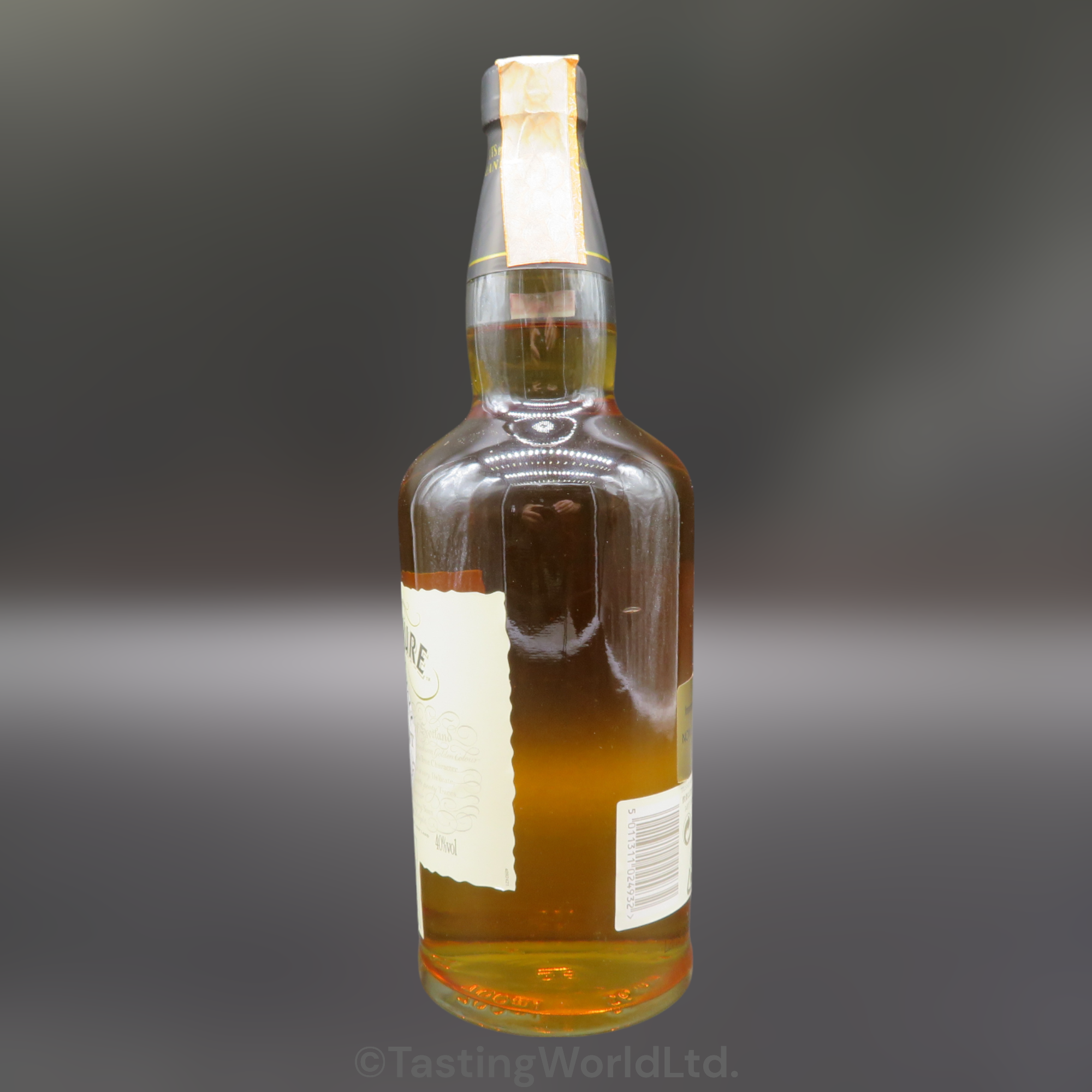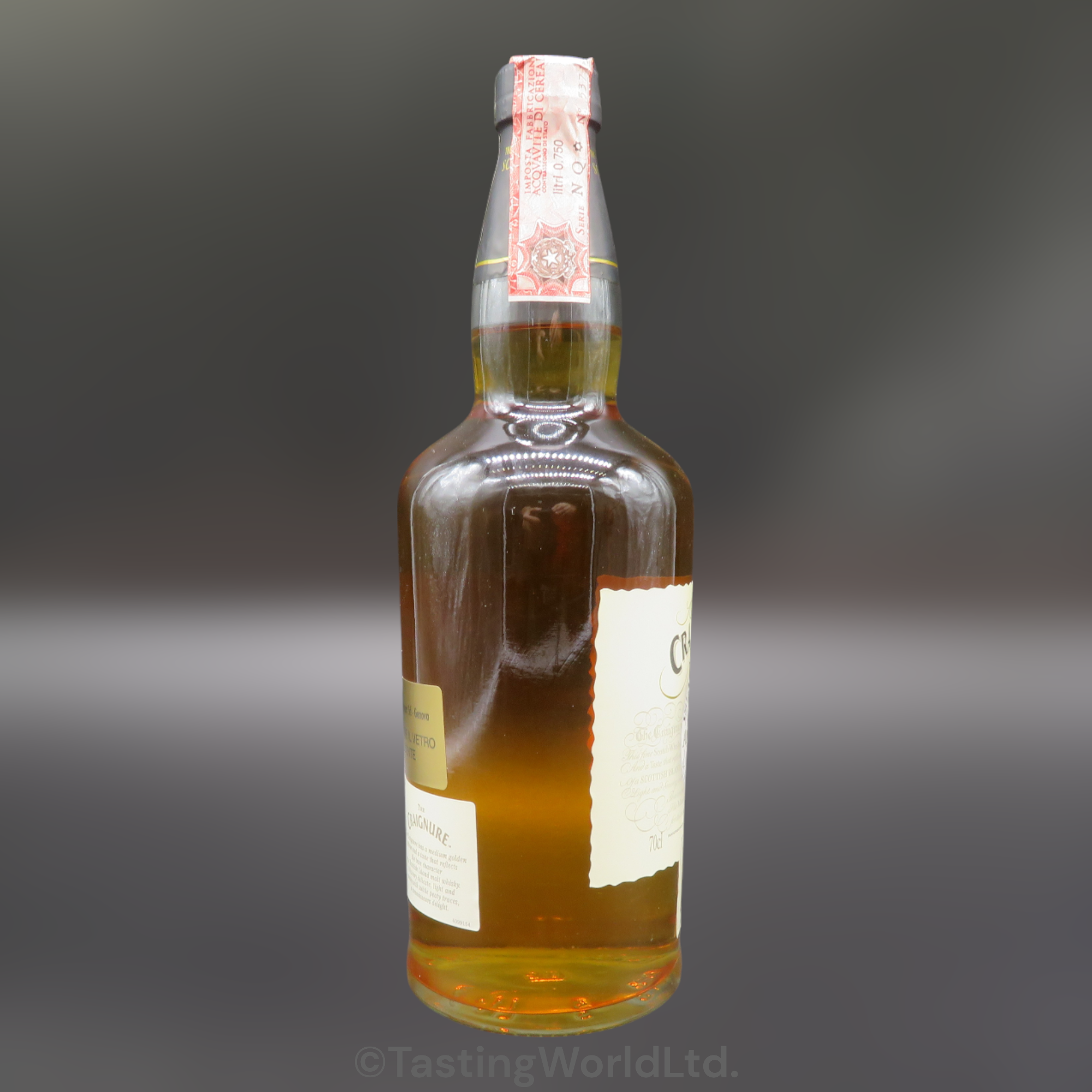The Craignure Island malt 10 year single malt whisky with box. 2002 Italy.
The Craignure Island malt 10 year single malt whisky with box. 2002 Italian tax band.
This bottle was part of a private collection/general circulation and can have natural signs of wear!!!
Condition: New. Collector.
Lost Distillery/Brand: No. Lost Brand.
Fill level: New. In the neck.
Whisky still produced: No.
Category: Single malt.
Distillery: Invergordon. Still producing, but not this whisky.
Bottler: Distillery Bottling.
Bottling series: The Craignure Island Malt.
Vintage: Not stated.
Bottling Year: 16.01.2002.
Stated Age: 10 years old.
Cask type: Not stated. Likely ex-Bourbon oak casks.
Strength: 40.0% Vol.
Size: 700 ml.
Colouring: Yes.
Chill-filtered: Unknown.
Bottle code: L2016 G6 08:53 02/00231
Country Origin: Scotland.
Region: Island.
Market: Italy.
The Craignure Island Malt 10 Year Old is an independently bottled Scotch single malt, released exclusively for the Italian market in the early 2000s. The name “Craignure” refers to the harbour town on the Isle of Mull, suggesting island provenance or inspiration.
Bottled at 40 % ABV, this expression presents a balanced, maritime character typical of island malts of its era — combining coastal freshness, light smoke, and malty sweetness. The 2002 Italian excise seal confirms its early-millennium bottling period, during a time when many small importers in Italy commissioned bespoke limited editions from Scottish producers.
Although no official distillery is declared, the style is consistent with island single malts of the period — possibly sourced from Tobermory or another west coast distillery. The Craignure label exemplifies the independent bottling tradition that flourished in Italy in the 1990s–2000s, catering to a niche audience of whisky enthusiasts seeking characterful, non-mainstream releases.
Tasting notes;
Appearance/colour; Pale gold.
Nose: Fresh sea breeze, soft peat smoke, honeyed malt, and faint citrus peel.
Palate: Smooth and lightly oily; gentle peat warmth, malted barley sweetness, vanilla, and a touch of salt.
Finish: Medium length with soft smoke, brine, and a hint of oak spice fading into sweet malt.
Distillery History:
Invergordon Distillery
Founding and Early Development (1959–1961)
Invergordon Distillery was established in 1959 by Invergordon Distillers Ltd., a company founded specifically to produce grain whisky for the blending industry. It is located on the northern shore of the Cromarty Firth in the town of Invergordon, Ross-shire, in the Highlands of Scotland.
Construction began in 1959, and production started in 1961 with a single Coffey still (continuous column still). At the time, this was an unusual undertaking — Invergordon became the only grain distillery in the Highlands, contrasting with the concentration of Scotland’s grain distilleries in the Lowlands near Edinburgh and Glasgow.
The founding of Invergordon represented a strategic response to the increasing demand for blending whisky in post-war Britain. Independent blenders and brokers sought a grain whisky supply not controlled by the large conglomerates such as DCL (Distillers Company Limited, later Diageo).
Expansion and Technical Development (1960s–1980s)
Following its successful launch, Invergordon expanded rapidly:
-
1963: Installation of a second Coffey still to increase capacity.
-
1978: A third Coffey still was added, cementing Invergordon as one of the largest grain whisky producers in Scotland.
The distillery used maize and later wheat as its principal grains, sourcing pure water from Loch Glass, which lies about 10 miles north-west in the hills above the distillery.
During the 1960s and 1970s, the company also acquired and operated several malt distilleries, including Ben Wyvis, Tamnavulin, and Tullibardine, forming part of the wider Invergordon Distillers Group portfolio. Ben Wyvis, built in 1965 on the Invergordon site, was a short-lived malt distillery whose spirit was used mainly for blending; it closed in 1977.
Ownership Changes and Modern Era (1990s–Present)
In 1993, Invergordon Distillers Ltd. was acquired by Whyte & Mackay Ltd., a major blending company based in Glasgow. Whyte & Mackay itself changed hands multiple times thereafter:
-
1993: Invergordon absorbed into Whyte & Mackay operations.
-
2001–2007: Ownership passed through Kyndal Spirits, then the American venture fund J.W. Hardie Group.
-
2007: Whyte & Mackay was purchased by United Spirits (part of the Vijay Mallya / UB Group of India).
-
2014: Whyte & Mackay became part of the Emperador Inc. group, a Philippines-based beverage company under Alliance Global Group.
Since that time, Invergordon has remained a core production site supplying high-quality grain whisky for Whyte & Mackay’s blended brands, including Whyte & Mackay Blended Scotch, The Claymore, John Barr, and others.
Production Profile and Capacity
-
Type: Grain whisky distillery
-
Water source: Loch Glass
-
Stills: 3 continuous Coffey stills
-
Capacity: Approximately 40 million litres of alcohol per annum
-
Output use: Primarily for blending; small independent single grain bottlings occasionally appear under Gordon & MacPhail, Cadenhead’s, and other independent bottlers.
Invergordon grain whisky is known for its clean, sweet, and creamy style — offering vanilla, coconut, and gentle cereal notes when matured in ex-Bourbon casks, sometimes released as single grain expressions aged 25–50 years.
Significance and Legacy
Invergordon holds an important place in Scottish whisky history as:
-
The only grain distillery in the Highlands.
-
A rare example of post-war independent grain whisky enterprise.
-
A continuing pillar of large-scale production supporting the Whyte & Mackay portfolio.
Its combination of industrial efficiency and Highland provenance makes it a distinctive name in the world of Scotch grain whisky.
© copyright, Tasting World Ltd. England.







